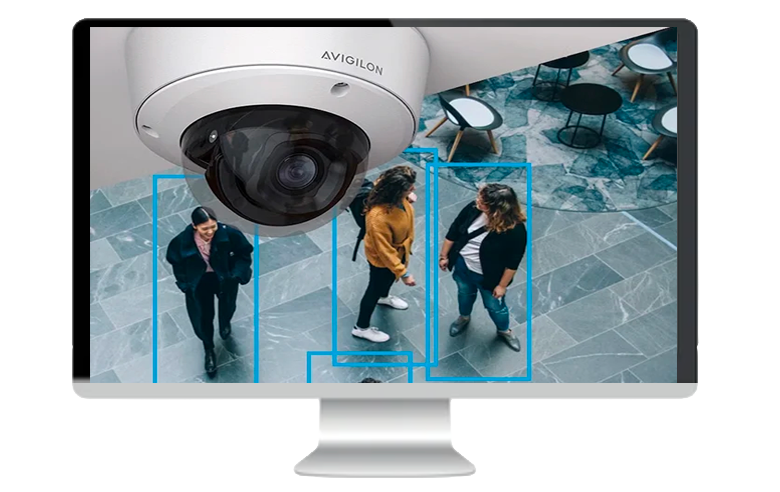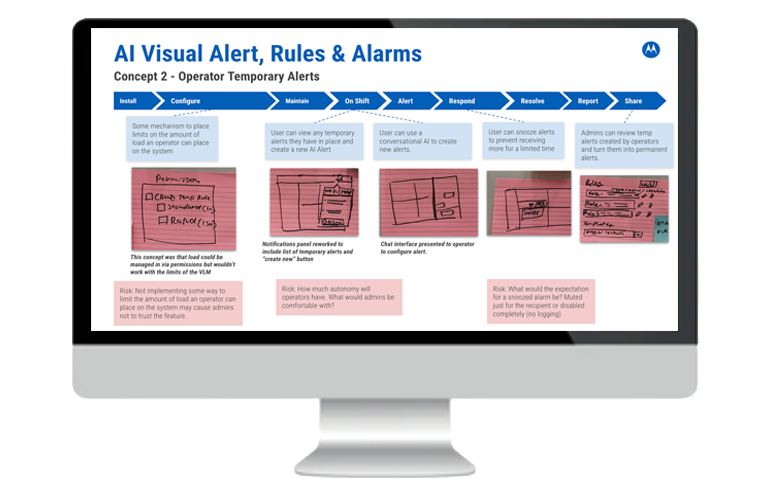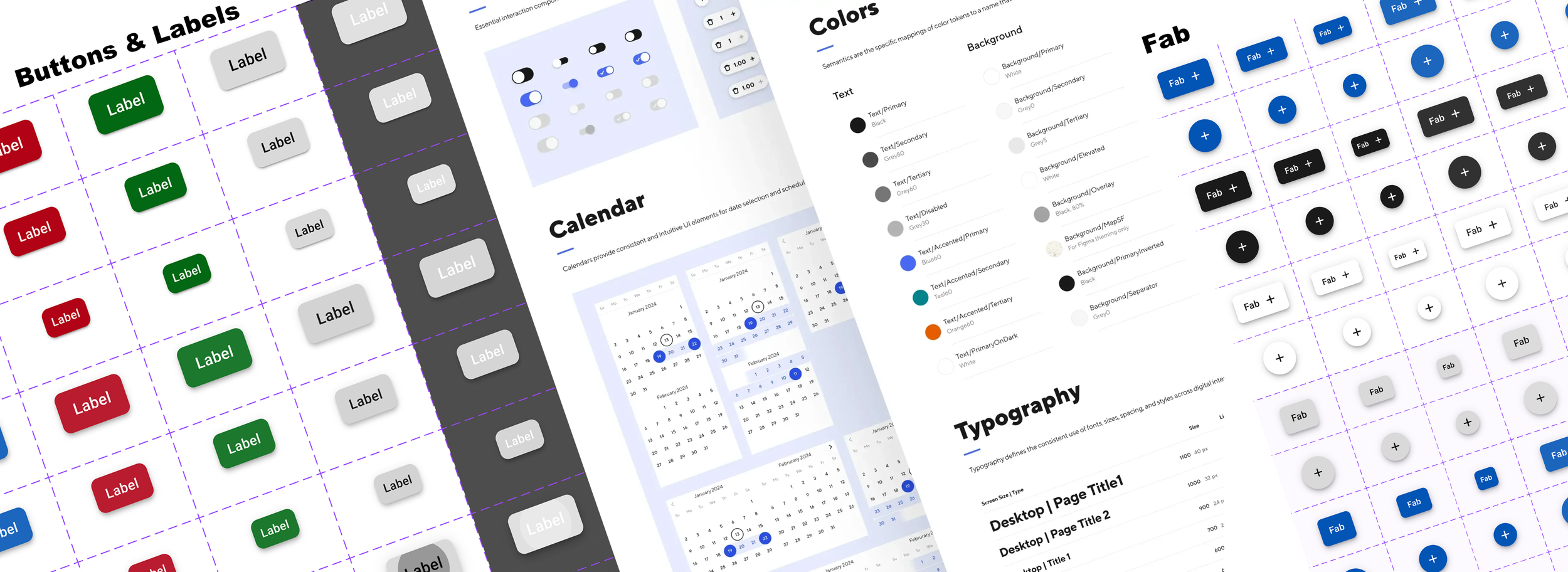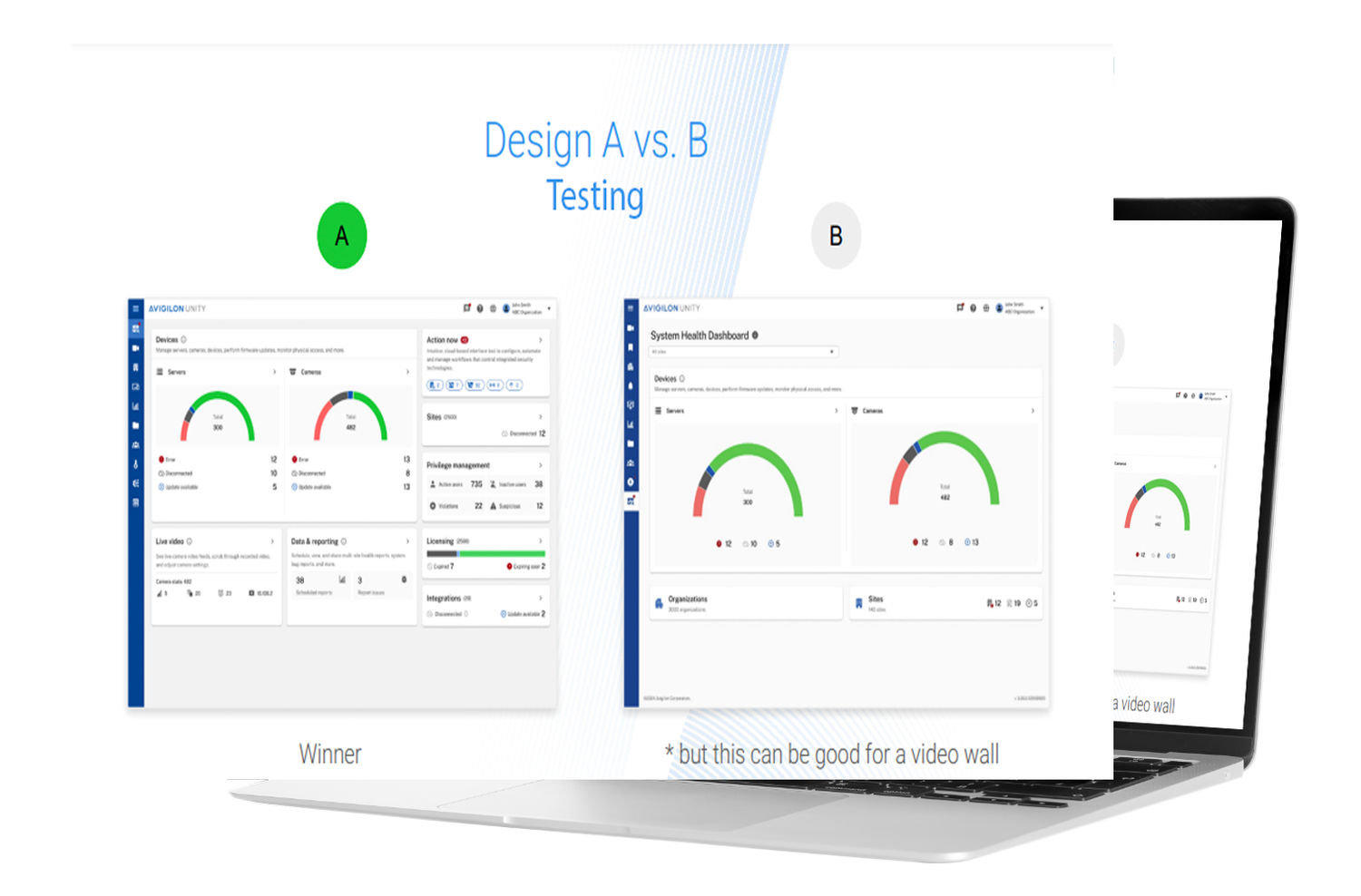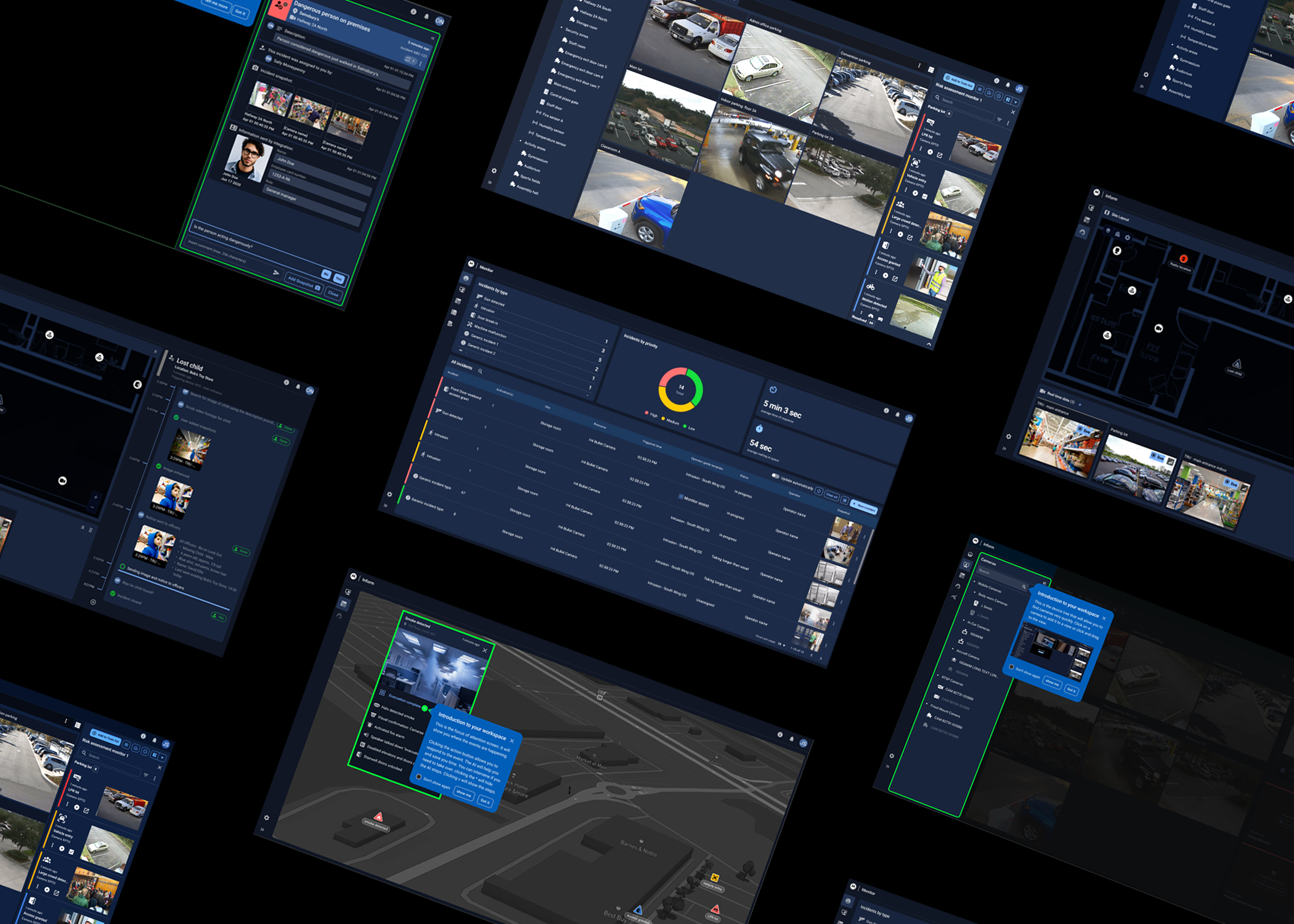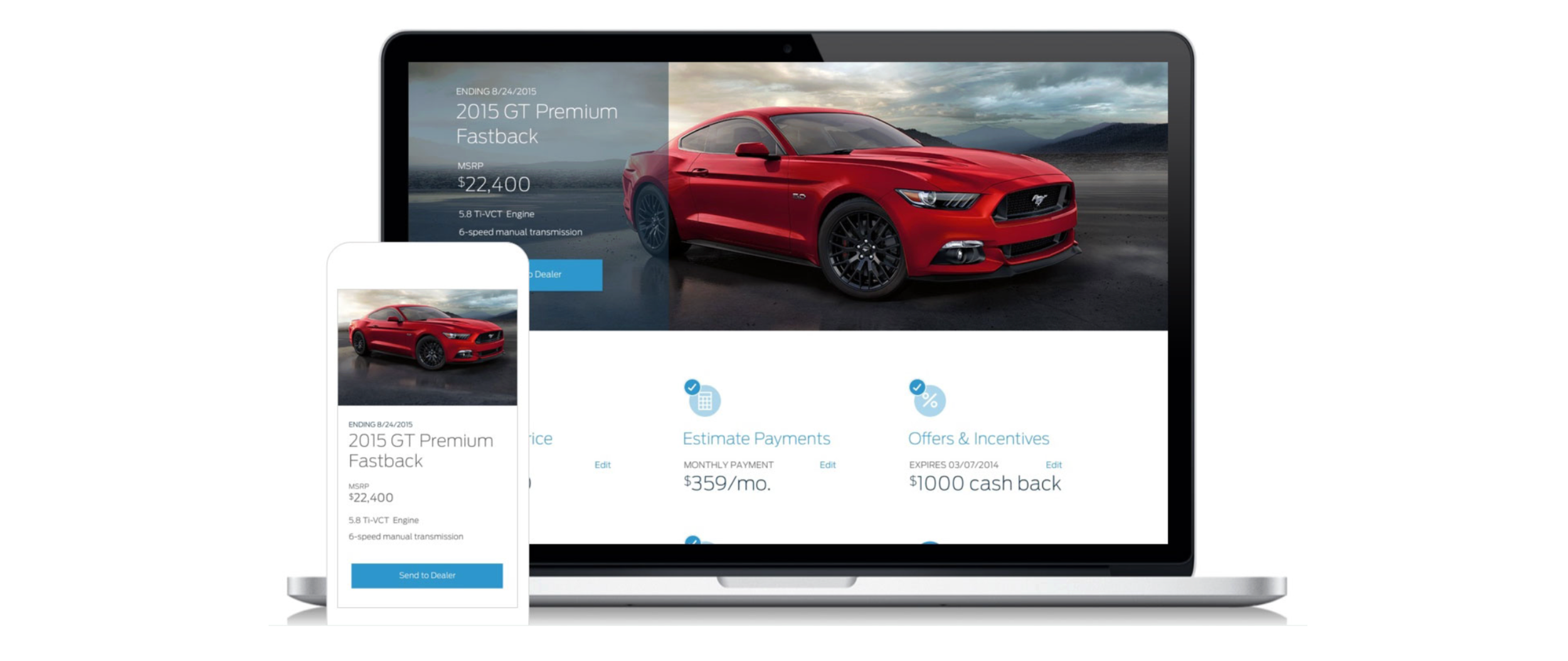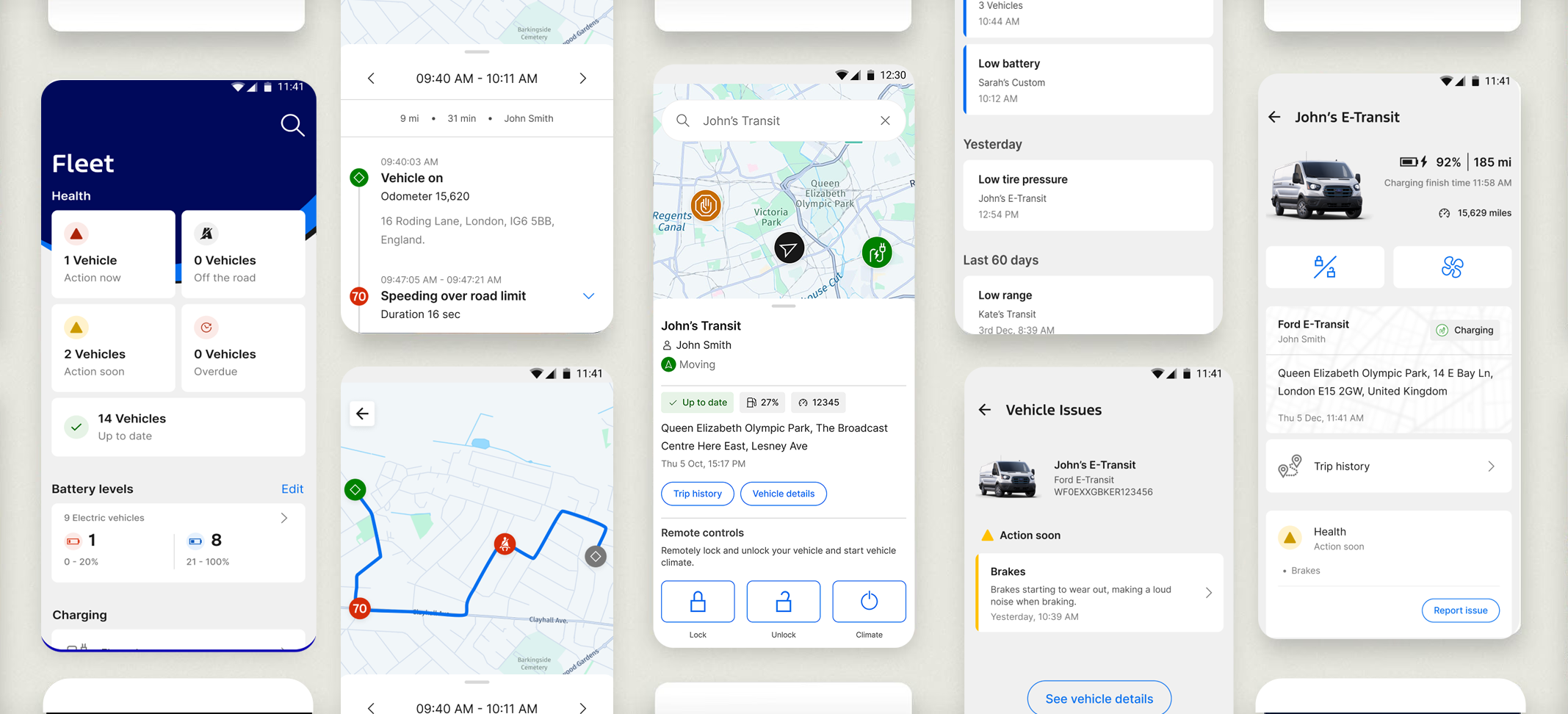Motorola Solutions
Reimagining the AI automated Physical & Digital Security SOC
Case StudyOverview
Inform is a multi-monitor experience that automates Security Operations Centers. It uses AI to monitor & triage all threats simultaneously in real time, and automate your responses, saving operator time, responding faster, and reducing false alarms. AI-driven, connected experiences that seamlessly link people, devices, and data intelligence across platforms.
The Challenge
SOC operators were overwhelmed by fragmented alerts, disconnected systems, and constant context switching, leading to fatigue, errors, and missed incidents.
SOC managers struggled with high turnover, compliance demands, and limited visibility into operator performance.
Motorola had strong standalone products—Avigilon Unity, DMS, Noggin, Access Control, Avigilon Alta, Facility, Mobile apps — but no unified workflow across them.
The goal was to create an integrated SOC platform that reduces alert noise, improves situational awareness, and unifies Motorola’s ecosystem into a seamless, operator-first experience.
My Role
Directed the end-to-end UX strategy for Inform, Motorola’s next-gen SOC platform.
Unified siloed products — Avigilon Unity, DMS, Facility, Access Control, Noggin, Mobile apps — into one cohesive, operator-focused experience.
Led a global design team (designers, researchers, prototypers) across Chicago, Vancouver, Lisbon, and Bangkok.
Partnered with Product, Engineering, and AI leaders to align research, roadmap priorities, and foundational design investments.
Drove innovation in operator workflows, multi-modal interfaces, and intelligent alert triage.
Approach
Systems Thinking Workshop
Led a cross-functional systems thinking workshop to align design, product, engineering, and AI teams around the SOC as an interconnected socio-technical system. By mapping end-to-end workflows, user roles, data flows, and feedback loops, we moved beyond feature-level optimization to identify system-level opportunities and risks. The workshop surfaced how fragmented tools increased cognitive load, why AI effectiveness depended on contextual clarity, and how unified workflows could compound value across speed, trust, and adoption. Outcomes directly informed the Inform platform vision, integration strategy, and shared UX principles—enabling scalable, human-centered solutions for enterprise SOC environments.
Outcome…
Evaluating AI Options
MSI AI Camera System Capabilities
AI-powered video surveillance using machine learning, computer vision, and deep learning.
Detects and analyzes objects, faces, behaviors, and events in real time.
Supports faster, more accurate security and operational decisions.
Why Use AI Camera Systems
Enhances security and situational awareness.
Improves operational efficiency by automating detection and analysis.
Reduces human error through intelligent alerts and insights.
Provides data-driven analytics for resource planning and loss prevention.
Limitations of AI in Video Surveillance
Potential bias in facial recognition or detection models.
Privacy concerns based on data collection and retention.
Dependence on stable network infrastructure.
Challenges integrating with legacy systems due to cost or technical constraints.
Key AI Features (Three Tiers)
Tier 1: Motion, people, and vehicle detection.
Tier 2: License plate recognition (LPR).
Tier 3: AI assistants, universal search, and advanced action detection.
Foundational Research
We began with immersive foundational research, visiting real SOCs across North America—including Georgia Tech Police, Coca-Cola, and Cox Communications—to map current workflows, tools, and mental models of the personas - Operator, Manager, and Admin personas.
Top Use Cases for AI Camera Systems by Verticals
Manufacturing and Logistics
Ensuring worker safety, streamlining operations, tracking shipping processes.
Education and Campus Security
Identifying unauthorized access, monitoring perimeters, ensuring student safety.
Law Enforcement
Assisting in suspect identification, searching historical videos, managing evidence.
Healthcare
Monitoring foot traffic, safety, improving customer experiences, deterring theft.
Design Thinking Workshop
Through guided exercises and discussions, we explored how teams currently perceived the product and where they envisioned its evolution. We synthesized the collective insights, affinity mapped themes.
Affinity mapping helped us cluster those insights into themes like:
System Fragmentation: “I have to log in to five different tools.”
Alert Fatigue: “There are too many notifications — I tune them out.”
Training Gaps: “We don’t know what half these features do.”
Workflow Interruptions: “Switching between screens breaks my focus.”
Trust in AI: “I’m not sure if I can rely on these alerts.”
Then distilled them into a clear set of foundational product principles to guide future design and development decisions:
Clarity Over Complexity – Surface only what’s relevant; reduce visual and cognitive noise in high-stress environments.
Actionable Intelligence – Data is only useful if it drives timely, confident action.
Unified Experience – Users shouldn’t feel the seams between products; the ecosystem must feel like one system.
Trust Through Transparency – Make AI decisions explainable; operators should understand why an alert was triggered.
Designed for Focus – Prioritize calm, legible interfaces that support decision-making under pressure.
Accessible by Default – Ensure every operator, regardless of skill or background, can succeed without heavy training.
These principles were documented and shared broadly, ensuring visibility, alignment, and consistency across the organization as we scaled the system.
We jumped right into prototyping, kicking things off with rapid Figma layouts to bring early concepts to life.
I championed a modular design system and AI-first framework for our integrated SOC platform, introducing:
Smart Tours: AI-curated camera sequences for proactive monitoring. Leveraged MCAP AI for real-time scene recognition and intelligent alert filtering - differentiating between benign actions
Contextual Alert Summaries: Natural language descriptions, tied to FOA maps and historical device activity
Multi-modal Dashboards: Role-based layouts for operators, supervisors, and incident investigators
Cross-Product Integration: Unified workflows connecting Avigilon Unity (video), Facility (alerts), and access control. Introduced single sign-on (SSO) across Motorola platforms—consolidating databases and permissions by persona (operator, supervisor, investigator).
Single Design System: Established a shared design system to unify UI patterns, workflows, and accessibility standards across cloud and on-prem
Once the roadmap was in place, we broke it down into feature streams and assigned them to the respective development teams. The design team worked closely throughout the process — from feature design to handoff and go-live — collaborating with cross-functional partners and refining along the way as needed.
Throughout the process, we prototyped rapidly in Figma and iterated based on field/user feedback, integrating input from early pilot customers and Motorola’s internal security teams.
Outcomes
The Inform SOC platform prototype brought clarity and cohesion to what had previously been a fragmented operator experience. Our AI-powered alert summaries, FOA map integration, and Smart Tour workflows were met with strong validation from both internal and external stakeholders:
Supervisor’s dashboard
Watch live videos
Report
Maps - location awareness
Impact
40% reduction in time to verify incidents (measured in internal SOC pilot vs legacy flow)
2x increase in situational clarity among operators during scenario testing (based on qualitative usability sessions)
Decreased false alarm fatigue by integrating Smart Filtering logic and scene-aware camera summaries
Accelerated product alignment and development by 40% across Avigilon Unity, Facility, and DMS teams, establishing a unified roadmap and shared design system
Influenced roadmap priorities and sales demos for enterprise clients in education, healthcare, and law enforcement verticals
The platform also helped shift Motorola’s internal conversation from feature gaps to workflow unification - bringing design, product and engineering stakeholders into shared ownership of the operator experience.
Product Video
Reflection
Leading this effort reinforced my belief that alignment is design's most powerful multiplier. Getting product, engineering, and go-to-market teams to co-own the operator journey unlocked better decisions and greater velocity.
I also learned the value of designing for resilience and clarity in high-stress environments. Security operators don’t need more data—they need better defaults, clear prioritization, and role-aware tools that guide rather than overwhelm. Much of my role was not just in designing interfaces, but in creating shared understanding around what problems we were truly solving and for whom.
If I were to do this again, I would push even earlier for cross-functional prototyping with real client data—and extend our validation cycles deeper into post-incident review workflows to close the loop on SOC accountability.
My Works
Reimagining Buick’s Cockpit
One Screen, One Experience
Software Design Product Design Automotive
Case StudYGeneral Motors: Chevrolet Corvette
The driver-centric cockpit experience
Software Design Product Design Automotive
Case StudYMotorola Solutions: Avigilon Cloud
Advanced System Health
Software Design Product Design Video Security
Case StudY





